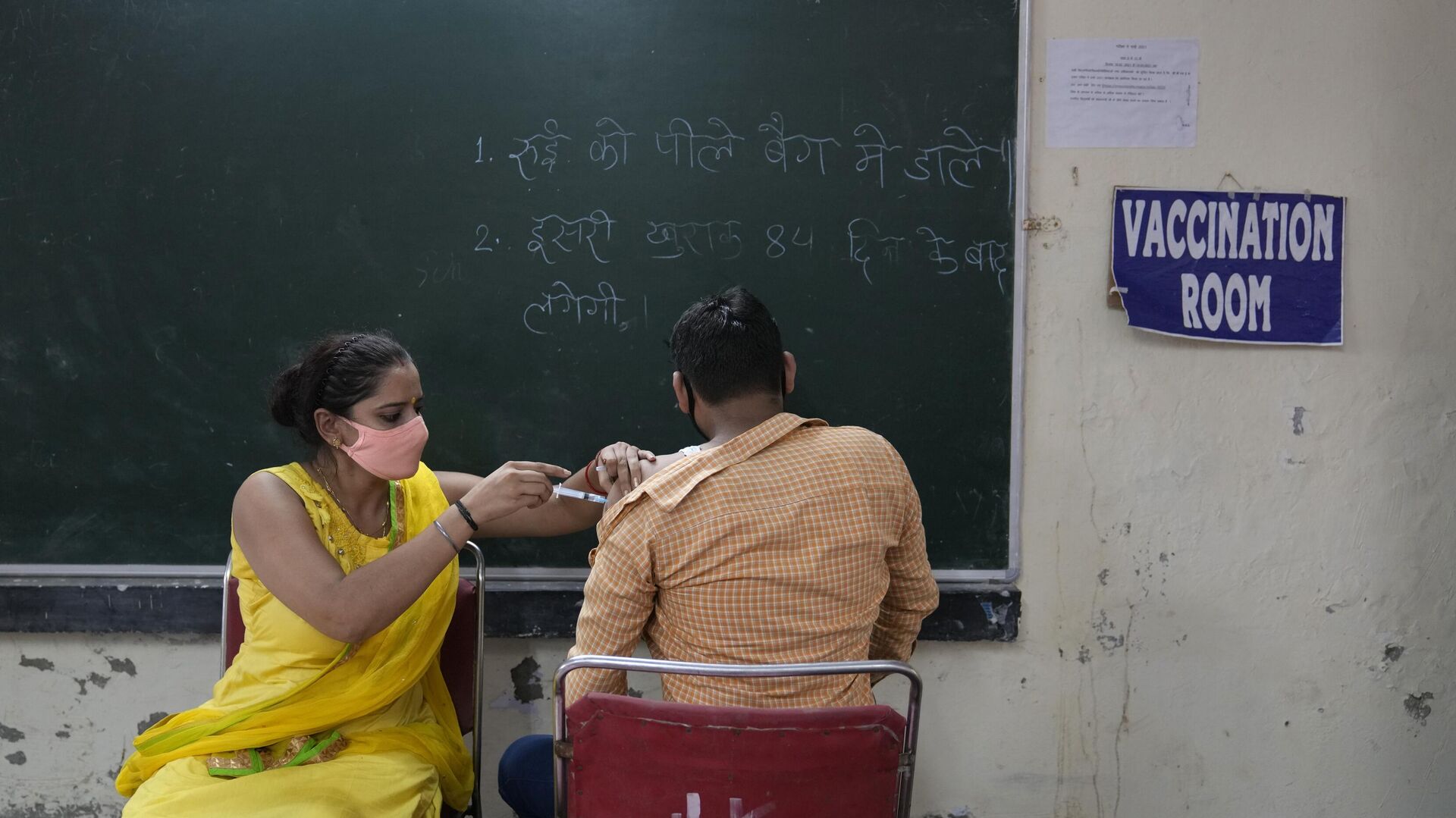https://sputniknews.in/20230208/india-needs-to-boost-capacity-of-drug-regulatory-agencies-says-expert-800383.html
India Needs to Boost Capacity of Drug Regulatory Agencies, Says Expert
India Needs to Boost Capacity of Drug Regulatory Agencies, Says Expert
Sputnik India
Federal Finance Minister Nirmala Sitharaman allocated INR 861 Billion to the department of health and family welfare, almost four percent up if compared with the previous year.
2023-02-08T19:27+0530
2023-02-08T19:27+0530
2023-02-08T19:27+0530
union budget
health
sputnik opinion
india
sickle cell anaemia
https://cdn1.img.sputniknews.in/img/07e7/02/08/804242_0:92:3319:1958_1920x0_80_0_0_30a6d0f107b4ce09bc94e47557061f71.jpg
Elimination of sickle anemia and plans to open 157 new nursing colleges are among the top budgetary announcements made by the Indian Finance Minister Nirmala Sitharaman in the health sector this time.India is a developing nation, where most of the population live in rural areas and a large number still remain below the poverty line, requiring the government to play a vital role in social engineering.Sputnik spoke with Dr Krishna Reddy Nallamalla, Regional Director of South Asia ACCESS Health International, to learn more about the issue.Sputnik: Does the Union Budget reflect a continued policy commitment to improve people’s health overall and enhance the provision and quality of health services to vulnerable sections of the population?Dr. Reddy: The Union Budget (2023-24) reflects a continued policy commitment to the ongoing national health mission and other major policies outlined in the National Health Policy of 2017. These include the four pillars of Ayushman Bharat, namely Pradhan Mantri Jan Arogya Yojana (PMJAY) to extend financial protection to 500Mln poor people, 150,000 Health & Wellness Clinics to strengthen comprehensive primary healthcare, Ayushman Bharat Health Infrastructure Mission (ABHIM) to strengthen public health infrastructure and emergency medical services, and Ayushman Bharat Digital Mission (ABDM) to leverage digital technology to transform health systems. The budget reflects the ongoing emphasis on building human resources for health through investments in medical and nursing colleges.Hence, the budget has to be viewed in the context of health and non-health determinants of population health status.Sputnik: So far, we have received mixed reactions on the health budget.Dr Reddy: I won’t view the health budget as either positive or negative. I view the budget as a window to government policies – whether there is a continuation of ongoing policies and a push towards new policies according to evolving health needs. The budget loses its significance if the capacity to use public finances efficiently and effectively is limited.Sputnik: Between 80 and 85 percent of medical devices are still being imported, was industry expecting more on it? The indigenous capacity in domestic production of medical devices is increasing across specialties. The domestic share of the cardiac stent market now exceeds that of imported stents. A similar trend is being seen in artificial joints. There is a need to give thrust to biomedical equipment manufacturing.Sputnik: Could you comment on the government's initiative to eliminate Sickle Cell anemia by 2047?Correction of the mutation by lentiviruses – “Lenti Globin” recently demonstrated a possible cure for sickle cell anemia. We need to peer into the finance minister's mind, what she had in mind in announcing this!Sputnik: A new program will be launched for scaling up research into pharmaceuticals. India is known for pharmaceuticals - should there also be resources for strengthening the capacity of our drug regulatory agencies to ensure the quality and safety of our pharmaceutical products?Dr Reddy: Yes, there is an urgent need to strengthen the capacity of drug regulatory agencies. The analogy extends to other health goods and healthcare services.
india
Sputnik India
feedback.hindi@sputniknews.com
+74956456601
MIA „Rossiya Segodnya“
2023
Deexa Khanduri
https://cdn1.img.sputniknews.in/img/07e6/0c/13/138923_52:0:533:481_100x100_80_0_0_cadf23d341691fc65ff2b22fd1afe584.jpg
Deexa Khanduri
https://cdn1.img.sputniknews.in/img/07e6/0c/13/138923_52:0:533:481_100x100_80_0_0_cadf23d341691fc65ff2b22fd1afe584.jpg
News
en_IN
Sputnik India
feedback.hindi@sputniknews.com
+74956456601
MIA „Rossiya Segodnya“
Sputnik India
feedback.hindi@sputniknews.com
+74956456601
MIA „Rossiya Segodnya“
Deexa Khanduri
https://cdn1.img.sputniknews.in/img/07e6/0c/13/138923_52:0:533:481_100x100_80_0_0_cadf23d341691fc65ff2b22fd1afe584.jpg
dr. krishna reddy nallamalla, health budget, interview, sickle anemia
dr. krishna reddy nallamalla, health budget, interview, sickle anemia
India Needs to Boost Capacity of Drug Regulatory Agencies, Says Expert
Deexa Khanduri
Sputnik correspondent
Federal Finance Minister Nirmala Sitharaman allocated INR 861Bln (£10.4Bln) to the department of health and family welfare, almost four percent more than the year before.
Elimination of sickle anemia and plans to open 157 new nursing colleges are among the top
budgetary announcements made by the Indian Finance Minister Nirmala Sitharaman in the health sector this time.
India is a developing nation, where most of the population live in rural areas and a large number still remain below the poverty line, requiring the government to play a vital role in social engineering.
Sputnik spoke with Dr Krishna Reddy Nallamalla, Regional Director of South Asia ACCESS Health International, to learn more about the issue.
Sputnik: Does the Union Budget reflect a continued policy commitment to improve people’s health overall and enhance the provision and quality of health services to vulnerable sections of the population?
Dr. Reddy: The Union Budget (2023-24) reflects a continued policy commitment to the ongoing national health mission and other major policies outlined in the National Health Policy of 2017. These include the four pillars of Ayushman Bharat, namely Pradhan Mantri Jan Arogya Yojana (PMJAY) to extend financial protection to 500Mln poor people, 150,000 Health & Wellness Clinics to strengthen comprehensive
primary healthcare, Ayushman Bharat Health Infrastructure Mission (ABHIM) to strengthen public health infrastructure and emergency medical services, and Ayushman Bharat Digital Mission (ABDM) to leverage digital technology to transform health systems.
The budget reflects the ongoing emphasis on building human resources for health through investments in medical and nursing colleges.
The Union budget has allocated considerable funds to other sectors that have a bearing on population health. These include allocations to ensure safe drinking water in every household, clean energy to reduce outdoor and indoor pollution, last mile digital communications and bandwidth connectivity for digital inclusivity and digital health, increased allocations to pharma research, opening up of research institutes under the Indian Council of Medical Research for private partnership.
Hence, the budget has to be viewed in the context of health and non-health determinants of population health status.
Sputnik: So far, we have received mixed reactions on the health budget.
Dr Reddy: I won’t view the health budget as either positive or negative. I view the budget as a window to government policies – whether there is a continuation of ongoing policies and a push towards new policies according to evolving health needs.
The budget loses its significance if the capacity to use public finances efficiently and effectively is limited.
Sputnik: Between 80 and 85 percent of medical devices are still being imported, was industry expecting more on it?
The indigenous capacity in domestic production of medical devices is increasing across specialties. The domestic share of the cardiac stent market now exceeds that of imported stents.
A similar trend is being seen in artificial joints. There is a need to give thrust to biomedical equipment manufacturing.
Sputnik: Could you comment on the government's initiative to eliminate Sickle Cell anemia by 2047?
Dr Reddy: The budget announcement on sickle cell anemia elimination is interesting. It brings to people's attention the issue of orphan diseases – those diseases that are neglected for a variety of reasons. It also brings to the fore the growing focus on the tribal population, as sickle cell anemia is more prevalent in the tribal population of a few states. The third dimension is the power of biotechnology in curing inherited diseases.
Correction of the mutation by lentiviruses – “Lenti Globin” recently demonstrated a possible cure for sickle cell anemia. We need to peer into the finance minister's mind, what she had in mind in announcing this!
Sputnik: A new program will be launched for scaling up research into pharmaceuticals. India is known for pharmaceuticals - should there also be resources for strengthening the capacity of our drug regulatory agencies to ensure the quality and safety of our pharmaceutical products?
Dr Reddy: Yes, there is an urgent need to strengthen the capacity of drug regulatory agencies. The analogy extends to other health goods and healthcare services.


